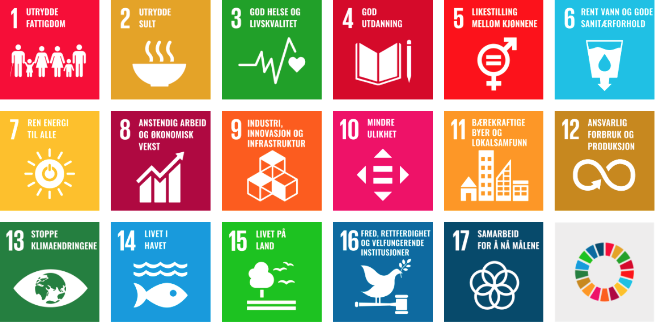Strong brands: 5 focus areas for brands that really want to succeed
New media platforms. New competitors. New consumption patterns. It’s only getting harder to create commercial success. Building a brand. But in tough times, a strong brand is no longer just a “nice-to-have”; it’s a necessity to stand out and engage customers. In this blog post, we’ll explore the importance of strong brands and share key factors that can help you build a solid branding strategy.
Why bother with branding?
Isn't it more important to be agile and constantly adapt to the market? The point is that a strong brand allows you to be agile and at the same time purposeful and relevant. It gives you a foundation from which to build different communication concepts, a direction to focus your creativity and energy.
Arguments such as the fact that solid brands can also charge better and usually get more clicks in Google and other advertising also weigh in. But we dare say that the most important advantage is the focus it gives the organization.
What do successful brands do?
There are many roads to Rome, but we will go through 5 elements that we believe are important in long-term brand building.
1: Purpose: Define the brand's purpose and values
A clearly defined purpose and clear values give customers something they can identify with. It creates positive energy. Do I share these values? Do I want to be a part of the journey this brand is on? Does this brand represent something good about myself? Does this brand take me closer to the person I want to be?
Patagonia, known for its outdoor clothing and gear, has a mission to "build the best products, cause minimal harm, and use business to inspire and implement solutions to the environmental crisis." They are actively involved in sustainability initiatives like their "Worn Wear" program, which promotes the repair and reuse of clothing to reduce waste. By focusing on sustainability and quality as a commodity, Patagonia has built a highly loyal customer base that shares their eco-conscious values. No one has a bad conscience when they buy a Patagonia garment.
“Our purpose is to help more and more people experience financial well-being.” is the Purpose Statement of the investment company BlackRock. They have a completely different business than Patagonia, and completely different values, but it is just as easy to understand what they are trying to achieve.
2: Consistency: Implement and control the brand identity
A strong brand is recognizable and consistent across all channels and touchpoints. This includes everything from logo and colors to tone of voice and visual style. Brand identity. By maintaining consistency, you build trust and credibility among customers.
The effort put into creating and anchoring a design manual will be rewarded a thousand times over by the brand. But it requires execution and - to repeat ourselves - anchoring! The entire organization and all partners must understand that they should not deviate from the guidelines the brand provides.
Apple is perhaps the epitome of consistent brand identity, from the iconic bite in the Apple logo to the minimalist design of their products. They are fierce in all negotiations with local creators, thus managing to maintain the image of a beautiful minimalist innovator.
3: Storytelling: Strong brands connect with emotions
A good story communicates values much more effectively than facts. But it has to be real, and it has to be relevant. The Post Office could have the Pride flag and diversity certification on every end, but they would never have achieved the impact that the “When Harry Met Santa” commercial did. It triggered emotions.
So it's not that easy for most people to compare themselves to Posten, but when such a large organisation If you dare to stretch the rope that far, you should also be able to dare to play on emotions a little. You just have to figure out what values you want people to associate with you and create stories around that. These are good creative experts, but storytelling doesn't necessarily have to be about creativity. But it has to be authentic.
Take shoe manufacturer TOMS, which donated a pair of shoes to the poor for every pair they sold. By sharing stories of how their donations helped the people who received the shoes, TOMS inspired customers to become part of their mission. The “Buy-One-Give-One” story was so powerful that they actually had trouble giving away enough shoes.
TOMS has now discontinued the shoe-giving tactic, opting for a slightly paler we-give-1-third-of-profit-to-good-cause variant. But they still tell different stories around their purpose that “We@re in business to improve lives”.
4: Service and customer experience: Don't ruin the branding job!
We build brands to create trust and sell more. We want to motivate people to buy from us and use our services. Strong brands know that good motivation quickly disappears if the shopping experience is bad. If the user-friendliness of the online store sucks. If the delivery is late. If the people you meet in the store are angry.
Consumers expect great service. They expect free shipping when they spend over a certain amount. They expect easy returns. They expect quick responses from customer service. The worst part is that online, they don't compare you to your competitors: They compare you to the best customer experience they've ever had.
In the past, great customer experiences could actually be the brand, but it has become more and more standard. You don't stand out by providing great customer experiences, but you're guaranteed to lose if you DON'T. AND then all the work with the brand is in vain.
That's why you also need to work with what we like to call service design in a branding process. How do we ensure that all customer touchpoints are as seamless, simple and engaging as possible?
Amazon is often the gold standard for customer experience. User-friendly interfaces, fast delivery and not least a high degree of personalization. They offer tailored recommendations and tailored shopping experiences. Personalization is a bit more difficult for us in Norway, as we have to deal with GDPR, consent and a set of rules that are completely different than in the US.
5: Build social responsibility and sustainability into the brand
“Refresh the World and Make a Difference” (Coca-Cola)
Sustainability and social responsibility have gone from being a buzzword to being a fundamental part of doing business. You won't be taken seriously by customers if you can't show how you're working to make the world a better place.
That's why at Mission we always talk about “meaningful goals.” When there is a greater purpose than making money, it inspires commitment, loyalty, and passion. From both customers and employees. It builds a brand.
So ask yourself what problems your brand is trying to solve and how it relates to larger issues in the world. What gets you to the office every morning?
Do you think it's difficult?
The UN has set 17 sustainability goals with 169 targets . Take a look through them and see if there is anything that strikes a chord with your heart and business. You are sure to find something that your brand can contribute to. Make a difference!
Conclusion:
Building a strong brand is an ongoing process that requires focus, dedication, and constant adaptation. But by defining a good purpose, you create the foundation for good brand building processes.
Please contact us at Mission if you need a partner in your work.
We hope this blog post has given you valuable insight and inspiration to strengthen your brand.





